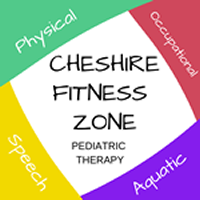If you are recovering from a physical injury and aquatic therapy isn’t part of your treatment, you are missing out. Your recovery could be swifter and easier if such therapy was included as part of your rehab program. Here are five reasons why aquatic therapy should be part of every injury rehab treatment.
#1. Swifter Recovery
Physical injuries can be incredibly difficult to recover from without aquatic therapy. Most injuries incorporate a wide range of factors including muscular damage, tendon and ligament damage, skin and nerve damage and bone damage. One or a combination of these factors can make it hard to become mobile again. Research published by the Aquatic Therapy and Rehab Institute shows that assisted mobility early in the recovery process leads to faster recovery times. Aquatic therapy is one way for patients to become mobile sooner after their injury because water alleviates pressure and the forces of gravity.
#2. Less Pain
One key benefit of aquatic therapy is that it allows patients to take weight off their joints. This causes less pain. Buoyancy allows patients to exercise and move without the same pressure on their muscles and joints that they are used to. For most patients, aquatic therapy is less painful than completing standard exercises such as assisted walking. This alone should be all the reason most patients need to consider aquatic therapy as part of their rehab program.
#3. Ease Of Access
Aquatic therapy should be part of any injury rehab because it gives patients ease of access. Unlike walking or moving upright, even severely injured patients can be lowered into a pool. They can complete exercises in the water that they wouldn’t be able to do whilst upright. Aquatic therapy is open to patients of all ages from very young children right up to older adults with limited mobility. This ease of access makes water-based therapy highly appealing to a wide spectrum of patients.
#4. Reduced Medicine Requirements
Many patients report less pain with aquatic therapy. If you compare walking in a swimming pool with walking on dry land, the former exercise allows more weight to be taken off bodily joints. Water therapy essential gives patients a gravity-free environment. This causes less pain so the patient will require less medicine such as painkillers during their therapy.
#5. Faster Progress
Aquatic therapy isn’t just for patients who cannot walk or move upright. All patients derive benefit from water therapy because the water resistance is beneficial. Moving your hands, arms or legs against the natural resistance of water strengthens your muscles and tendons. This helps patients make faster progress than they otherwise would be able to.
Conclusion
These five benefits of aquatic therapy in CT should make any patient consider this form of therapy as part of their rehab treatment. If you are currently recovering from an injury, be sure to look into the benefits of aquatic therapy. What do you think of our tips? What did we miss? Leave us a comment or question below!



